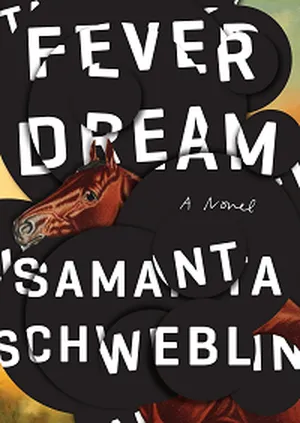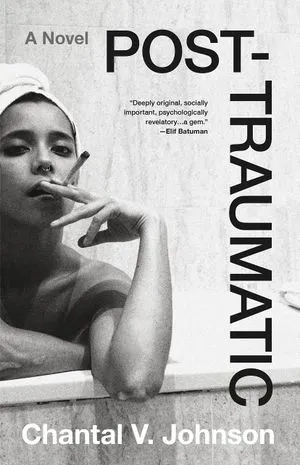
What Is a Scream-of-Consciousness Book?
This spring, Swedish American author Alvina Chamberland released her English-language debut, Love the World Or Get Killed Trying, a brilliant, fiery work of autofiction about a transgender woman on the cusp of 30 traveling alone through Iceland, Paris, and Berlin. The publisher’s marketing copy describes the book as “an urgent wildfire scream-of-consciousness, cry-of-love manifesto,” which certainly got my attention. After reading and sitting with the novel for a while, I kept returning to this turn of phrase, “scream of consciousness”. It’s a visceral, irreverent term that perfectly encapsulates Chamberland’s narrative voice. But what is a scream-of-consciousness book? Where did the phrase come from? Are there others like it? I spoke with Alvina Chamberland about Love the World Or Get Killed Trying, scream-of-consciousness prose, and other works to which it might apply.
What Is Scream of Consciousness?
Alvina Chamberland is quick to admit that the phrase likely isn’t completely original. “I’m sure other people have uttered it before — I don’t believe we ever really fully ‘invent’ anything,” Chamberland said when asked about the origin of the phrase. “But I personally haven’t encountered it before.”
Indeed, a Google search of the term “scream of consciousness” turns up a few poems, along with vintage videos of snowboarders and a shade of matte red eye makeup. But it’s certainly not the subject of academic papers or an established literary genre with delineated borders. It’s a twist on stream of consciousness, a narrative device that takes the shape of a meandering inner monologue of a protagonist.
“For me, scream of consciousness came as a combination between cry of love/scream of love and stream of consciousness,” Chamberland elaborated. “It differs from the latter as the latter solely denotes the stream running through one’s consciousness. However a scream of consciousness further indicates a grave urgency, a necessity to cry and scream it all out in order to not be eaten alive by it.”
Scream of Consciousness and Love the World Or Get Killed Trying

Love the World Or Get Killed Trying is undeniably a primal scream of a book. Chamberland doesn’t shy away from the everyday horrors of existing as a trans woman in a straight cis male world. We experience trauma, fear, and plenty of mistreatment through protagonist Alvina’s eyes (yes, the protagonist shares a name with the author, further blurring the lines between fact and fiction).
The most powerful and immersive aspect of the book is the internal monologue style of the narrative voice, at turns furious, curious, hilarious, and heartbreaking. We see other characters treating Alvina as a fetish, an oddity, a scapegoat, a subject of pity, rarely as just a woman trying to explore the world on her own. But through Alvina’s eyes, we see her as the brilliant artist and chaotically, emotionally complex being she is, even when it’s painful to watch. The book is truly a scream of consciousness, impossible to ignore. As Alvina says to the reader in a moment breaking the fourth wall, “If it gives you a headache to read, what do you think it’s like to live?”
I asked Chamberland about her approach to writing the book. “I only write when I have something that feels deep, or beautiful, or terrible inside of me that needs to come out for me to sustain any form of equilibrium,” she shared. “Writing is not an occupation for me, something I do as a job. I insist on keeping the passion of an amateur. I want to continue writing from the same place I did when I was 19 and fell madly in love with a zest that was too much to handle for both him and me. That’s the personal and poetic level.”
“And as a straight trans woman, there are just so many things to be furious and despairing about, structurally,” Chamberland continued. “So much true, deep love that breaks apart due to straight men’s lack of courage, so many precarities coming from other people’s stereotypes and projections — about our strong femininity rendering us incompetent, about us being victims rather than knowledge bearers. We know society’s various sides and undersides much better than most, and often have to scream to be heard.”
Alvina Chamberland’s Recommendations for Scream-of-Consciousness Books
I asked Chamberland what other books and works inspired the scream-of-consciousness style of her latest novel. The first that came to mind for her is also the first that came to mind for me, as it’s by an author that fictional protagonist Alvina brings up frequently in the book. Brazilian writer Clarice Lispector is a notable presence throughout Love the World Or Get Killed Trying, and Chamberland was quick to mention her books Água Viva and The Passion According to G.H. as examples of scream-of-consciousness literature.
Água Viva is perhaps Lispector’s most experimental work, an internal meditation on life and death and meaning and the experience of having a human body. It’s meandering yet urgent, heady yet visceral, and its influence on Love the World Or Get Killed Trying is clear. The Passion According to G.H. is another Lispector novella that is light on plot but heavy on philosophical musings that amount to so much more than what technically occurred. At its base, it’s a story about a woman home alone who kills a cockroach. But in the mind of the protagonist, a sculptor in 1960s Rio, we delve into the concept of sentience, of art, of the blurred line between sanity and madness.
Additionally, Chamberland suggests Austrian writer Ingeborg Bachmann’s Malina for further scream-of-consciousness reading. This 1971 work explores the inner monologue of an unnamed narrator torn between two different men and haunted by nightmares of her father. It’s a contemplation on the relationships between men and women and the tension between emotion and truth.
Chamberland also mentioned musical artists whose work channels a scream-of-consciousness style: Diamanda Galás, Fiona Apple, Sanni Est, Björk, and Amy Winehouse.
More Scream-of-Consciousness Reading Recommendations
If you’re looking for more books that could fall under a new category of scream-of-consciousness novels, here are a few that might interest you:

Nightcrawling by Leila Mottley
You’ll find a gritty, unflinching first-person perspective on sex work, poverty, and coming of age in Nightcrawling, Leila Mottley’s debut novel, written when she was only 19. It’s a brutal scream-of-consciousness story of Kiara, a teenager in East Oakland whose experience in sex work begins with a misunderstanding but continues out of a lack of support systems, ultimately leading to her involvement in the uncovering of an Oakland Police Department scandal. Seeing the world through Kiara’s eyes is incredibly powerful, and it’s a book with a great sense of urgency and emotion that will stay with you long past the last chapter.

Fever Dream by Samanta Schweblin, translated by Megan McDowell
Sometimes the sensation of being trapped in your own dark thoughts can feel like a horror novel, and that’s exactly what Samanta Schweblin’s novel Fever Dream explores. It’s the haunting surrealist tale of a woman dying in a rural hospital and in conversation with a boy at her side who may or may not be really there. The woman recounts her recent days and faces her coming demise, with intense reflection on parenthood and all that we can’t protect our children from. Full of earthly terrors and a creeping sense of dread, it’s a strong contender for the category of scream of consciousness.

God Bless You, Otis Spunkmeyer by Joseph Earl Thomas
For a scream-of-consciousness novel centered around the American healthcare system, the military and prison industrial complexes, and Black manhood, read Joseph Earl Thomas’s God Bless You, Otis Spunkmeyer. Joseph Thomas (another protagonist who shares a name with the author) is an Iraq War vet, single father, medical resident, and emergency room tech in North Philly who is trying to find his way forward. He becomes interested in the history of medical tests performed on inmates, and his research leads him to his own father — who was incarcerated for sexually assaulting Joseph’s mother when she was a teenager. Through a sprawling internal monologue, it explores Joseph’s experience moving through the world as a Black man and the sociopolitical forces that have shaped his life.

Post-Traumatic by Chantal V. Johnson
While Chantal V. Johnson’s Post-Traumatic may not be written in the first person you’d traditionally expect of a stream-of-consciousness narrative, it does share the sharp experimental style and close personal look inside the mind of someone unraveling after experiences of trauma yet also demanding to be seen and understood that I’ve noted in relation to scream-of-consciousness books. Vivian is a lawyer representing mentally ill patients at a psychiatric hospital in New York, and while she may seem to have her life together, she’s dealing with her own mental health struggles from a tumultuous childhood and the stress of everyday life as a Black Latinx woman. Can close third-person narrative voices with intense explorations of their protagonist’s inner life count as scream of consciousness? That, my discerning reader, I leave up to you.











